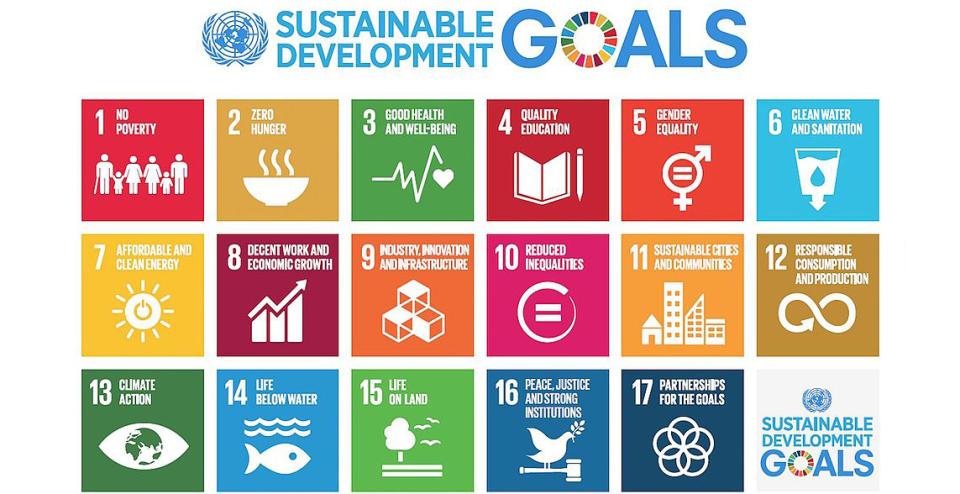
Short answer, everything
I recently attended the Sri Lankan Internet Governance Forum (IGF) where I spoke on a panel that discussed the linkages between the Sustainable Development Goals (SDGs) and the Internet. My intervention was framed around two questions.
- Technology and Information and Communication Technologies (ICTs) have been recognized as major drivers for achieving sustainable development and achieving targets across the SDGs. How are women and girls placed in this?
- How do we ensure that women, girls, and other marginalized groups are not left behind in achieving the SDGs, including the technology targets and indicators?
Statistics show that while the digital divide is gradually closing (though penetration rates are still very low in developing and least developed countries), the gender gap in access to the Internet is getting wider. The global Internet user gender gap grew from 11% in 2013 to 12% in 2016. This means that as Internet penetration increases in countries, it is mostly men’s access that is increasing while the number of women who have no or limited access remains the same. It is important that we investigate some of the reasons behind this widening gender gap.
The global Internet user gender gap grew from 11% in 2013 to 12% in 2016. This means that as Internet penetration increases in countries, it is mostly men’s access that is increasing while the number of women who have no or limited access remains the same.
Women are not a homogenous group and our access to technology is also affected by a number of other factors such as age, class, caste, race, ethnicity, income, culture, religion, sexual orientation, gender identity, abilities, urban or rural locality, etc. Therefore, we have to overcome multiple discriminations in order to gain access. These include, but are not limited to, the high cost of devices, the high cost of connectivity, lack of infrastructure, cultural and religious restrictions, geographical location, language barriers, etc.
Even when we overcome those barriers, often women and girls’ increased access to the Internet is directly proportional to the increase of violence against women online. Many a time, rather than address the structural causes of violence, the possibility of violence is used as a reason to restrict women and girls’ access to the Internet and censor their freedom of expression and right to bodily integrity. Or, as we’ve seen in other countries in our region, laws that purportedly address cyber crime are put in place to grant the State sweeping powers to restrict people’s, and especially women’s, right to information, freedom of expression, sexuality, sexual rights, right to bodily integrity, etc.
Many a time, rather than address the structural causes of violence, the possibility of violence is used as a reason to restrict women and girls’ access to the Internet and censor their freedom of expression and right to bodily integrity.
Therefore while the Internet and ICTs may hold a lot of potential to achieve sustainable development, we need to acknowledge that unless structural inequalities are acknowledged and addressed, women as well as other marginalized groups are not going to reap equal benefits that are truly transformative. It is also important that we don’t put all our eggs in the ICTs basket. Instead, we should incorporate a wide definition of technology that is “not only machines and equipment, but also the skills, abilities, knowledge, systems and processes necessary to make things happen” which includes technology that is traditional, indigenous, frugal (cost-effective technologies that are developed specifically to cope in local conditions), etc.
It is time we expand the discourse around Internet governance to move “beyond the narrow subjects of protocols, names and numbers into areas related to social impact and rights”. We have to disrupt the idea that the Internet is neutral and acknowledge that the Internet and Internet governance can impact different groups of people in different ways. As this discourse expands, it is important that forums such as these are truly multi-stakeholder, not just in terms of participation but in terms of the topics of discussion and panellists. This includes a feminist discourse on the Internet, women’s rights and issues related to gender. While we discuss these issues in thematic forums such as the Women’s IGF, it is also crucial that we integrate them into more general discussions without treating them as issues that should only be discussed by women among women.
We should incorporate a wide definition of technology that is not only machines and equipment, but also the skills, abilities, knowledge, systems and processes necessary to make things happen which includes technology that is traditional, indigenous, frugal, etc.
If the SDGs are going to use ICTs as a vehicle to achieve the goals then we need to use an intersectional and multi-pronged approach to ensure that women, girls and other marginalised groups are not left behind.
So, what would that look like?
- Reform national ICT Policies
There is no doubt that policies, especially national ICT policies that are often gender neutral, would exclude people unless the most marginalized people are put at the center of our policies. For this, national gender and ICT policies and broadband strategies must be developed cohesively and with proper integration of issues. One of the ways this can happen effectively is by including women in ICT policymaking and decision-making. - Collect gender and sex disaggregated data
Some of the indicators on SDG targets related to technology require sex disaggregated data and it is critical that we ensure that more indicators collect gender and sex disaggregated data. This requires the commitment of those who have a stake in Internet governance to view the Internet as a non-neutral space with social impact as well as financial commitment to collect such data. - Capacity building and awareness-raising
Even when infrastructure and affordable access is in place, women and girls’ access to the Internet is hindered by other factors such as gender roles, gender stereotypes, and cultural and religious beliefs. Understanding this would enable institutions such as the Information and Communication Technology Agency (ICTA) of Sri Lanka to not just provide infrastructure, devices and connectivity but to also work with communities, women’s rights activists, educators and others to carry out awareness raising around women and girls’ right to access the Internet in a meaningful way.
Comprehensive sexuality education (CSE) programmes, both in and out of school, need to incorporate new challenges and violence as well as new avenues for pleasure, relationships and expression that girls (and boys) have access to on the Internet and give them the necessary skills and knowledge to use and navigate the Internet securely and to have control over their privacy. Instead of restricting access, we need to give them agency because the former just means they will find access elsewhere without the skills and knowledge about security. - Making the SDGs enforceable
With no accountability mechanism to ensure that the ambitious language and goals of the SDGs are actually implemented at the national level, it is important that we look to existing normative frameworks that commit States to, explicitly or implicitly, take action. - Meaningful access
When we talk about access, what kind of access are we talking about? The Association for Progressive Communications (APC) defines meaningful Internet access to “be construed as pervasive, affordable connection (of sufficient quality and speed) to the Internet in a manner that enables the user to potentially benefit from Internet use including to participate in the public sphere, exercise human rights, access and create relevant content, engage with people and information for development and well-being, etc.; irrespective of the means of such access (i.e. whether via a mobile or other device; whether through private ownership of a device or using a public access facility like a library).” Therefore discussions on access in Internet governance as well as among ICT policymakers have to incorporate more nuances so that we are actually discussing meaningful access.
In conclusion, it is evident that if the SDGs are to be transformative for all people, then it is imperative that the structural inequalities women and girls face in accessing technology are acknowledged and addressed. As our presence at this IGF shows, women are ready for action and it is high time we are part of the multi-stakeholders who form, develop and sustain this forum.
As our presence at this IGF shows, women are ready for action and it is high time we are part of the multi-stakeholders who form, develop and sustain this forum.
This article is republished with permission from Resurj
- 5877 views






Add new comment